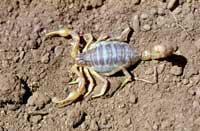Surikata, great teacher

But in some cases the breeding has an active attitude: it not only looks at it but participates in some way in hunting. Of course, learning is done gradually: at first, the adult brings dead prey and, as it forms, brings living prey. Surikata, for example, has an active attitude in hunting learning, as you have seen recently.
Surikata is a small live mammal from southern Africa. He lives in large groups of about 30 people, especially developing his capacity for relationship with the members of the group. Among them, adults teach their young how to practice hunting. Teaching is done step by step, so that the offspring are easily assimilated.
Responding to puppy call
At first glance it seems like a game, but it is a serious matter for breeding. Not only because a necessary ability to survive is developing (even if there is no awareness of it), but because there is hunger. If you want to satisfy you must face the dam. So learn by hunger.

When the calf is very small it is given the dead or half dead prey. The prey is normally an insect (insectivorous suricata), but it can also be scorpion, deer, reptile or some bird. When they bring a scorpion to the puppy, for example, they remove the punch beforehand. However, as the puppy exerts, an increasingly intense predation occurs and no effort is made to eliminate the fist of the scorpion. So the breeding faces the prey.
In view of this behavior, a question arises: how does the adult know how to bring the prey to the puppy? Well, some UK researchers have found an answer to this question. They seem to take into account the puppy's hunger call, as the suricato cry changes as it grows: the tone decreases and is less repetitive.

To verify that the relationship between the scream and the dam was correct, researchers have used the recordings. And they have seen that once the recordings of the repetitive cries of the little puppies were placed, the adult suricato brought the prey almost dead, and by putting the recordings of the larger puppies brought the prey much more alive.
However, the work of adult suricata is not just to bring the prey. The researchers have seen that they stay next to the puppy: somehow they put him to face the booty and observe how the breeding is solved.
Therefore, it is clear that Suricatas are persevering teachers. However, it is not so clear whether adult Suricatos perform this teaching task “consciously” or are limited to responsive stimulus behavior. Among the experts, opinions are favorable to one answer and another.
Published in 7K.
Buletina
Bidali zure helbide elektronikoa eta jaso asteroko buletina zure sarrera-ontzian











